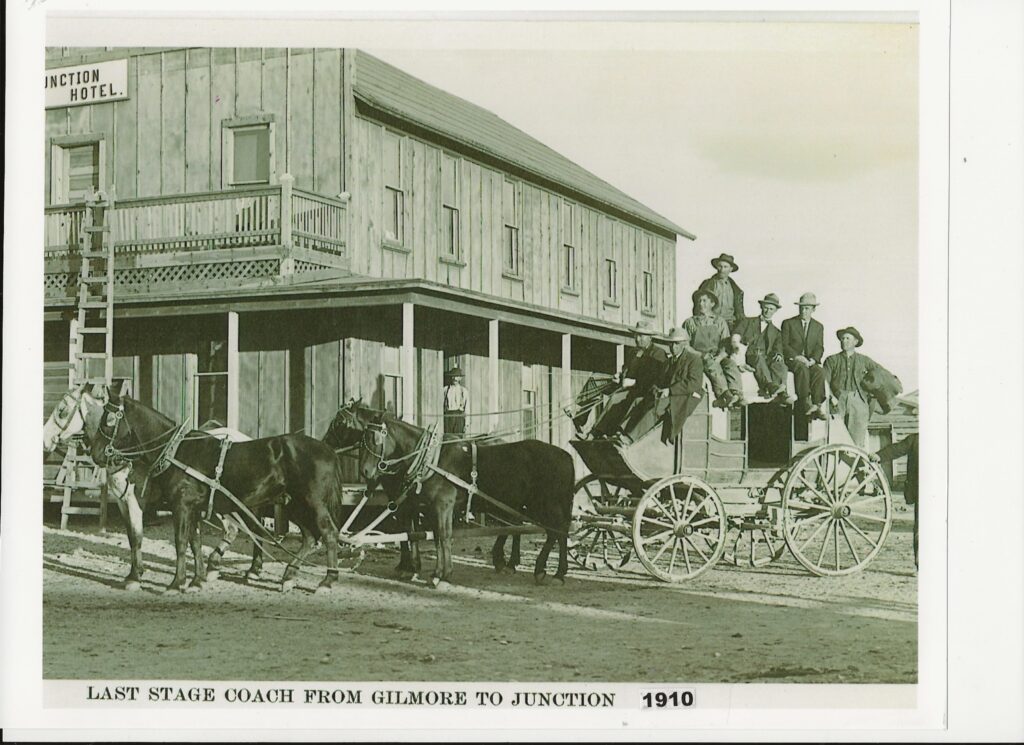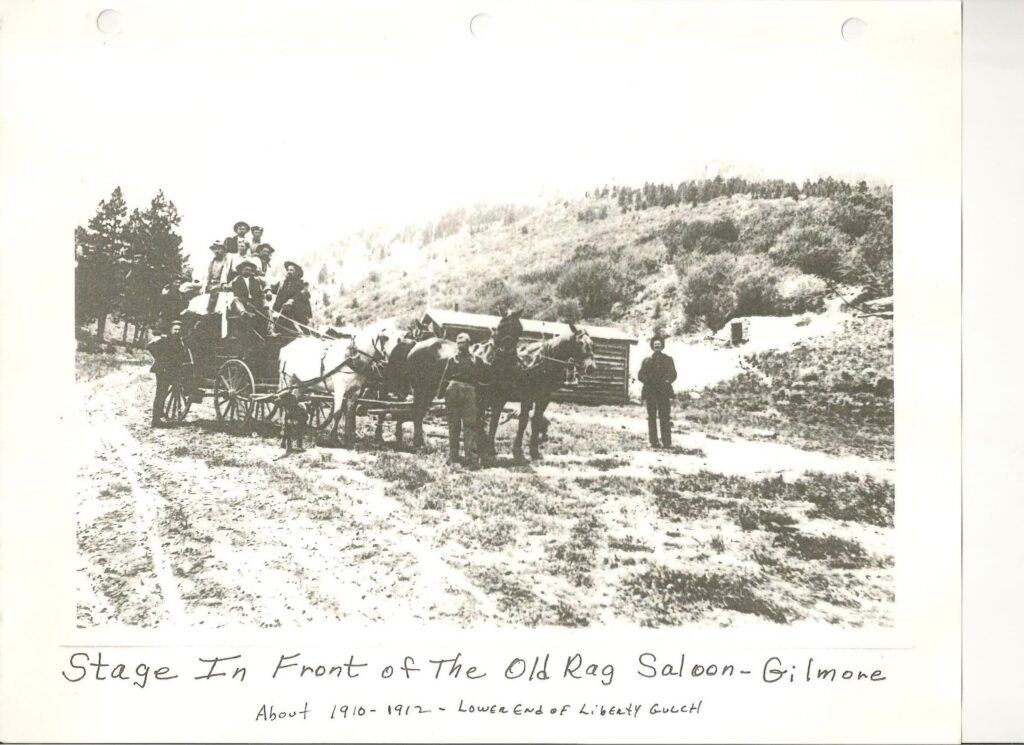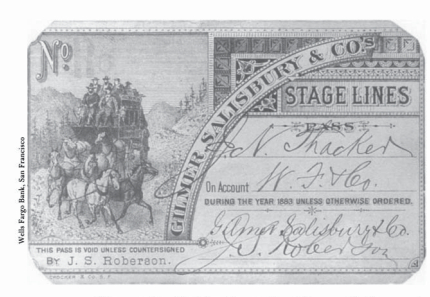The Gilmer and Salisbury Stage Company was a prominent stagecoach transportation company in the American West during the late 1800s. Founded in 1866 by John T. “Jack” Gilmer (1841 – 1892) and Monroe Salisbury, the company operated routes in several states, including Idaho, Montana, Utah, and Wyoming. This article explores the company’s history and impact, with a special focus on its operations in Gilmore, Idaho.

The Stagecoach Era in the West
During the mid-to-late 1800s, stagecoaches were a vital mode of transportation in the expanding American frontier. These rugged vehicles, often pulled by a team of horses or mules, were designed to endure the rough terrain of the West. Stagecoaches played a critical role in the frontier economy, delivering mail, transporting passengers, and hauling freight across vast distances.
Origins of the Gilmer and Salisbury Stage Company
Jack Gilmer and Monroe Salisbury recognized the demand for reliable transportation across the frontier and established their stagecoach line in 1866. Their primary route connected Corinne, Utah, with Helena, Montana, passing through key mining towns in Idaho. One such town was Gilmore, Idaho, originally intended to be named “Gilmer” in honor of Jack Gilmer. Due to a post office spelling error, the name was recorded as “Gilmore,” and the mistake was never corrected. This name was chosen by the town’s founders, the Ross brothers, to honor Gilmer’s contributions, especially as his stagecoach business began to decline with the rise of railroads.
The Stagecoaches and Horses
The stagecoaches used by the Gilmer and Salisbury Stage Company were specifically built to endure the challenges of the western frontier. Constructed from sturdy materials such as iron and hardwood, these vehicles were designed for durability. The bodies were mounted on leather “thoroughbraces,” which acted as primitive shock absorbers, cushioning passengers from the rough terrain.

The coaches had space for passengers, mail, and freight. Larger models could carry up to 12 passengers, with some seated inside and others on the roof. These vehicles were pulled by a team of four to six horses, which were changed at relay stations every 10 to 15 miles. Stagecoach horses were selected for their strength and stamina, trained to maintain speed over long distances, and were cared for by station attendants along the route.
Passenger Comfort and Experience
Traveling by stagecoach was an adventure, but comfort was relative. The interior of the coach had padded seats, but they were narrow and cramped, especially for long journeys. Passengers often found themselves sitting knee-to-knee with strangers. The ride was bumpy due to the rough, unpaved roads, and passengers had to endure long hours in the coach, sometimes up to 15 hours a day.

However, despite these discomforts, the stagecoach provided a necessary and relatively efficient means of travel across the frontier. Windows could be opened for fresh air, and passengers often enjoyed the opportunity to socialize with their fellow travelers. Stops at relay stations allowed for brief moments of rest, food, and refreshment, making the long journey a bit more bearable.
The Importance of Mail and Freight
One of the most important services provided by the Gilmer and Salisbury Stage Company was mail delivery. In the 1800s, mail delivery in the West was notoriously slow and unreliable, often taking weeks or even months to reach its destination. By using stagecoaches, the company improved the speed and reliability of postal services. Contracted by the United States Postal Service, they ensured that mail was delivered more quickly, strengthening communication across remote areas.
In addition to mail, the company transported freight such as mining equipment, agricultural supplies, and manufactured goods. The reliable transportation of goods was essential for the economic growth of the frontier, particularly for mining towns like Gilmore. The stagecoach system connected these isolated communities to larger markets, enabling trade and commerce.
Challenges on the Frontier
Running a stagecoach line in the West was not without its dangers. The remote and lawless nature of the frontier made stagecoaches frequent targets for outlaws and bandits looking to steal valuable cargo. Additionally, there were conflicts with Native American tribes whose lands were being encroached upon by settlers and transportation routes. The drivers and passengers had to remain vigilant, and some stagecoaches were armed for defense. Despite these risks, the Gilmer and Salisbury Stage Company continued to provide essential services to frontier communities.
Decline and Legacy
As railroads began to spread across the West in the late 1800s, stagecoach lines gradually became obsolete. The efficiency and speed of trains surpassed that of stagecoaches, leading to the decline of companies like Gilmer and Salisbury. By the late 1800s, the company was absorbed by larger transportation firms and ceased operations.
However, the legacy of the Gilmer and Salisbury Stage Company lives on. The stagecoach became an enduring symbol of the American West, representing the determination and resilience of the pioneers who settled the region. Today, towns like Gilmore, Idaho, still carry traces of this history, keeping alive the memory of the stagecoach era.